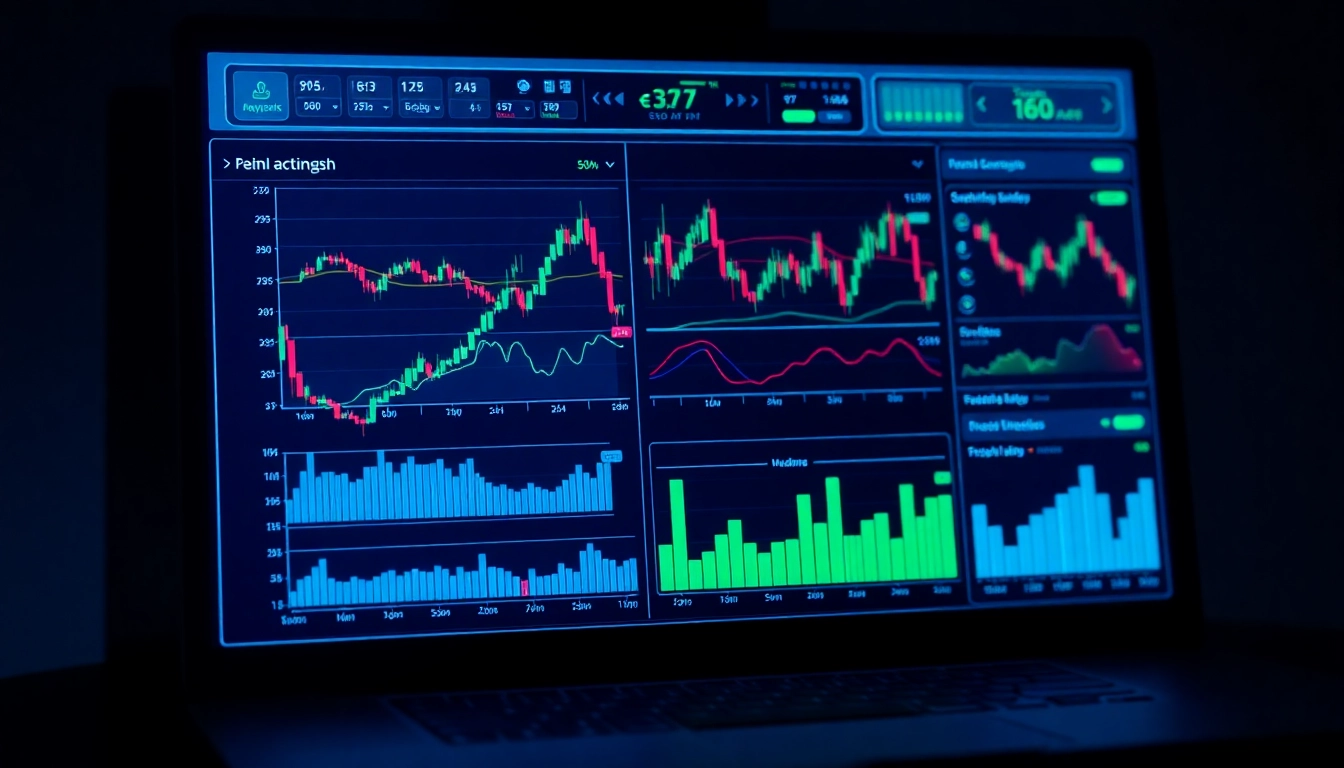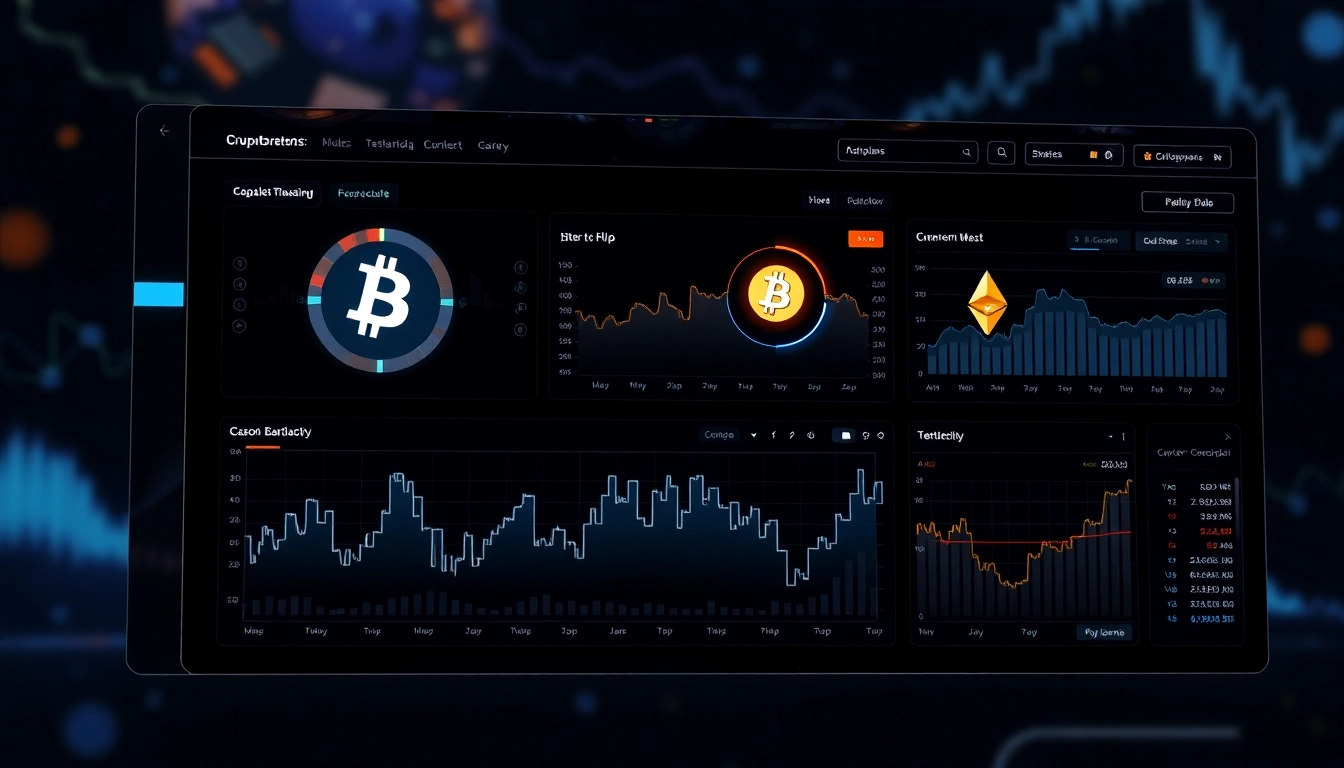Understanding the Trading View Platform and Its Core Features
Introduction to Trading View and Its Market Coverage
In the rapidly evolving world of financial markets, traders and investors seek robust tools that provide clarity, real-time data, and insightful analysis. At the forefront of this revolution is trading view, a comprehensive platform that combines advanced charting capabilities with social trading features. Currently serving over 60 million users worldwide, TradingView has cemented its reputation as a supercharged charting platform that caters to both novice traders and seasoned professionals alike. Its extensive market coverage spans cryptocurrencies, stocks, indices, commodities, forex, and futures, ensuring users have a panoramic view of financial markets in a single unified platform.
What makes TradingView stand out is its ability to integrate multiple asset classes, enabling traders to analyze diverse markets simultaneously. Whether you’re tracking Bitcoin’s volatile swings, the S&P 500’s movements, or forex pairs like EUR/USD, TradingView provides real-time data feeds coupled with interactive charts. Its social ecosystem allows traders to share ideas, strategies, and analysis, making it not just a charting tool but a thriving community of market enthusiasts.
Key Tools and Charts Available for Traders
TradingView offers an extensive suite of tools that empower traders to perform meticulous technical analysis. Its hallmark is the highly customizable interactive charts that feature various technical indicators, drawing tools, and analytical overlays. From moving averages and Bollinger Bands to Fibonacci retracements and Ichimoku clouds, users have access to hundreds of built-in indicators designed for in-depth market assessment.
Furthermore, TradingView supports multiple chart types including candlestick, line, bar, and hollow candles, enabling traders to choose visual representations that best suit their strategies. The platform also allows for multi-timeframe analysis, letting users compare trends across different periods simultaneously—an essential feature for both scalpers and long-term investors.
Additional tools include financial screeners for stocks, cryptocurrencies, and forex, facilitating rapid scanning for promising trade setups based on technical and fundamental filters. The built-in social features also allow for the sharing and publishing of trading ideas directly on the platform, fostering community-driven learning.
Customizing Your Dashboard for Better Workflow
Efficiency in trading often depends on how well traders customize their workspace. TradingView excels in this area by offering highly customizable dashboards. Users can create multiple layouts tailored to specific Assets or strategies, pin important indicators, and arrange panels for quick access to market watchlists, news feeds, and alerts.
For example, a day trader might set up a chart with short-term indicators like RSI and MACD, alongside a live news feed and real-time alerts, all neatly organized for rapid decision-making. Meanwhile, a swing trader might prefer daily and weekly charts, combined with a broad watchlist to monitor multiple assets.
Importantly, TradingView allows users to save and export their layouts, enabling seamless workflow across devices. Its user-friendly interface, combined with drag-and-drop customization, ensures that traders can develop an environment that minimizes distractions and maximizes analytical efficiency.
Strategies for Using Trading View to Enhance Trading Performance
Technical Analysis Best Practices with Trading View Charts
Technical analysis is at the heart of effective trading, and TradingView provides all necessary tools for mastering it. To maximize potential, traders should establish a disciplined approach: start by defining a clear trend—uptrend, downtrend, or sideways—and then apply relevant indicators. Moving averages help identify trend direction, while oscillators like RSI or Stochastic reveal overbought or oversold conditions.
Integrating multiple indicators and chart patterns can improve predictive accuracy. For instance, combining candlestick patterns with Fibonacci retracements can pinpoint entry and exit levels with higher confidence. The key is to avoid indicator overload; instead, focus on a few complementary tools to prevent analysis paralysis.
Regularly reviewing historical price action and back-testing trading strategies on TradingView’s charts allows traders to refine their approach based on empirical data, thereby improving overall performance.
Setting Alerts and Notifications for Market Movements
Time-sensitive information is critical for both day trading and swing trading. TradingView’s alert system is a powerful feature that enables traders to stay ahead of market moves without constantly monitoring charts. Users can set alerts based on price levels, indicator thresholds, or specific patterns, receiving notifications via email, SMS, or app alerts.
For example, a trader might set an alert to notify them when a stock crosses above a key resistance level or when an oscillator signals overbought conditions. These timely alerts facilitate quick decision-making, allowing traders to act promptly.
Effective use of alerts reduces emotional trading by automating trigger points, ensuring discipline, and freeing up traders to focus on analysis rather than constant chart watching.
Leveraging Community Ideas for Trading Decisions
One of TradingView’s standout features is its vibrant community of traders sharing ideas and analysis. Exploring community ideas can serve as valuable supplementary information, providing diverse perspectives, trade setups, and market insights. Traders can browse through millions of shared ideas categorized by asset class, trading style, and performance ratings.
Engaging with community insights helps traders validate their analysis, discover new patterns, and learn from experienced professionals. Moreover, commenting and collaborating with other traders can deepen understanding and improve analytical skills.
However, it’s essential to exercise due diligence—community ideas should inform and complement your own research, not replace it. Cross-referencing ideas with your analysis ensures more informed trading decisions.
Advanced Tips for Maximizing Trading View Functionality
Integrating Trading View with Trading Platforms
For traders who execute trades through brokers, integrating TradingView with trading platforms can significantly streamline workflow. Many brokers support direct connections with TradingView, allowing users to place and manage orders directly from charts. This eliminates the need to switch between multiple interfaces, reducing latency and improving execution speed.
To set up integration, traders need to connect their broker accounts within TradingView’s trading panel. Once linked, they can utilize TradingView’s charts for analysis and execute trades seamlessly, ensuring consistency between analysis and execution.
Such integration also aids in maintaining disciplined trading strategies, as the visual and analytical cues from TradingView reinforce decision-making.
Using Scripts and Indicators for Custom Analysis
TradingView’s proprietary scripting language, Pine Script, allows traders to develop custom indicators, alerts, and trading strategies. Skilled programmers can automate complex analysis, backtest strategies, and create personalized tools tailored to specific trading styles.
For example, a trader might develop a custom oscillator that better fits their market preferences or build automation for pattern recognition. Sharing scripts within the community also fosters collaborative improvement, leading to more robust tools.
Leveraging Pine Script effectively can provide a competitive edge by enabling bespoke analysis that aligns precisely with your trading approach.
Optimizing Your Workflow: Mobile and Desktop Trading View
Mobile App Features for On-the-Go Trading
The TradingView mobile app offers a full suite of charting and analysis tools optimized for smartphones and tablets. Features like customizable watchlists, real-time alerts, and community access allow traders to stay connected and responsive anywhere.
Advanced features include drawing tools, multiple chart layouts, and the ability to execute trades if integrated with a broker. Push notifications help traders stay alerted to important market events without being glued to a desktop.
This mobility is especially beneficial for active traders and investors needing immediate insights during market hours or while commuting.
Desktop Version: Enhanced Tools for Serious Traders
TradingView’s desktop version delivers the most comprehensive analytical environment. With larger screens and more processing power, traders can analyze multiple assets simultaneously, utilize advanced scripting, and access high-frequency data feeds.
The desktop platform also supports multiple windows, extensive indicator sets, and deeper customization options, perfect for professional trading setups. Its stability enables complex backtesting and strategy optimization, essential for developing profitable trading systems.
Using the desktop version in conjunction with mobile access ensures a seamless and consistent trading experience across platforms.
Measuring Success: Monitoring and Improving Your Trading Strategies
Tracking Performance Metrics Using Trading View Tools
Evaluating trading performance is vital for ongoing improvement. TradingView’s tools allow traders to log trades, analyze profitability, and visualize key performance metrics. Traders can create custom dashboards tracking win/loss ratios, average gains/losses, and risk-reward ratios.
Embedding these metrics into their workflow fosters data-driven decision-making and discipline. Regular review helps identify strengths and weaknesses, leading to more refined strategies.
Additionally, integration with external performance analysis tools can further enhance insights, ensuring that traders adapt to evolving market conditions effectively.
Adjusting Strategies Based on Market Data
Successful traders continuously adapt their strategies based on real market data. TradingView’s real-time charts, historical data, and indicator overlays enable ongoing scenario testing. By analyzing past trades and current market trends, traders can refine entry/exit rules, optimize indicator parameters, and adjust risk management protocols.
Systematic review of market patterns and performance metrics supports disciplined trading and reduces emotional decision-making. Employing a systematic approach to strategy refinement, backed by TradingView’s analytical tools, ensures sustained trading excellence.
Staying Updated with Market News and Community Insights
Staying ahead requires awareness of market-moving news and collective sentiment. TradingView combines real-time news feeds, economic calendars, and community updates within a single environment. Following market news on the platform or through integrated feeds ensures traders are aware of developments that impact their assets.
Engaging with community insights fosters a broader understanding of market psychology, which can be invaluable during volatile periods. Combining fundamental news with technical analysis leads to more robust trading decisions.




